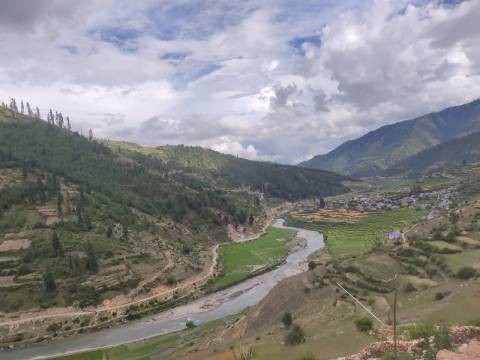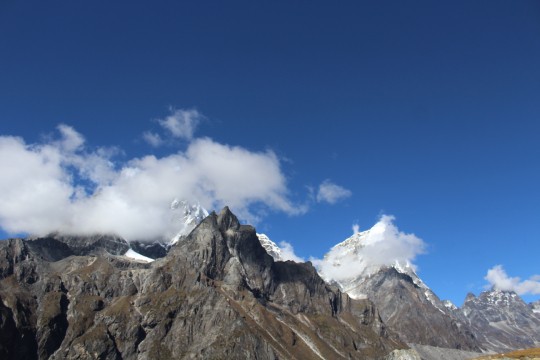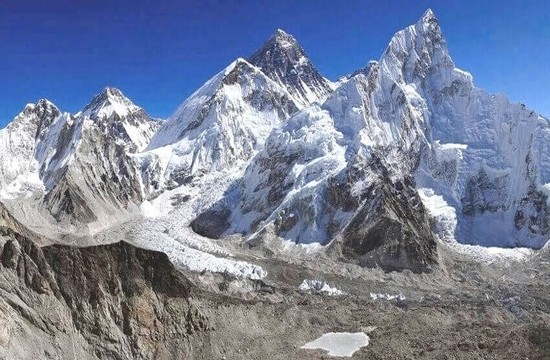Peak Climbing in Nepal
Peak climbing in Nepal is an exhilarating adventure that attracts thrill-seekers and outdoor enthusiasts from around the world. With its majestic Himalayan peaks, rich cultural heritage, and breathtaking landscapes, Nepal offers a unique and unforgettable experience for climbers of all levels; from beginners to veterans ones.
Nepal, home to eight of the world's 14 highest peaks, including Mount Everest, provides an array of opportunities for peak climbing. While Everest itself is the ultimate challenge for seasoned climbers, there are numerous other peaks with varying difficulty levels that cater to beginners and experienced climbers alike. Some popular peaks for climbing include Island Peak (Imja Tse), Mera Peak, Lobuche East, Yala Peak, Chulu West Peak, and Pisang Peak, among others.
Before embarking on a peak climbing expedition, climbers need to obtain climbing permits and, in some cases, be accompanied by licensed guides or Sherpas. The Nepal Mountaineering Association (NMA) oversees climbing permits, and local trekking agencies can assist with logistics, equipment, and experienced guides.
Peak climbing in Nepal offers not just a physical challenge, but also a chance to immerse in the country's unique culture and diverse landscapes. Treks to base camps typically lead through lush forests, terraced fields, and quaint villages, where trekkers can interact with friendly locals and observe traditional lifestyles.
The climbing season in Nepal typically spans from March to May in the spring and September to November in the autumn. During these months, the weather is relatively stable, with clear skies and moderate temperatures, providing the best conditions for climbing. However, the weather in the Himalayas can be unpredictable, and climbers must be prepared for sudden changes and adverse conditions.
As climbers ascend higher altitudes, they may encounter challenges associated with altitude sickness. Acclimatization is crucial to avoid severe health issues, and most climbing itineraries include rest days at higher altitudes to help climbers adjust to reduced oxygen levels.
The ascent to the summit is a demanding endeavor, requiring physical fitness, technical skills, and mental strength. Climbers may encounter steep icy slopes, crevasses, and other obstacles that call for ropework, ice axes, crampons, and other climbing gear. For those new to peak climbing, it is advisable to undertake some basic mountaineering training before attempting more challenging climbs.
The rewards of peak climbing in Nepal are unmatched. Standing on the summit, climbers are rewarded with awe-inspiring views of the Himalayan peaks stretching to the horizon. The sense of accomplishment and the breathtaking beauty of the surrounding landscapes create unforgettable memories.
In recent years, there has been growing concern about the impact of tourism on the fragile Himalayan ecosystem. To address this, sustainable and responsible trekking and climbing practices are encouraged, with an emphasis on waste management, minimizing environmental footprints, and respecting local cultures and traditions.
In conclusion, peak climbing in Nepal is an extraordinary adventure that combines physical challenge, cultural immersion, and the sheer beauty of the Himalayas. From beginners to professional mountaineers, Nepal offers a diverse range of peaks to conquer and an opportunity to connect with nature and oneself. As the nation continues to welcome climbers from all corners of the globe, responsible and sustainable practices will ensure that future generations can also experience the magic of peak climbing in this incredible country.
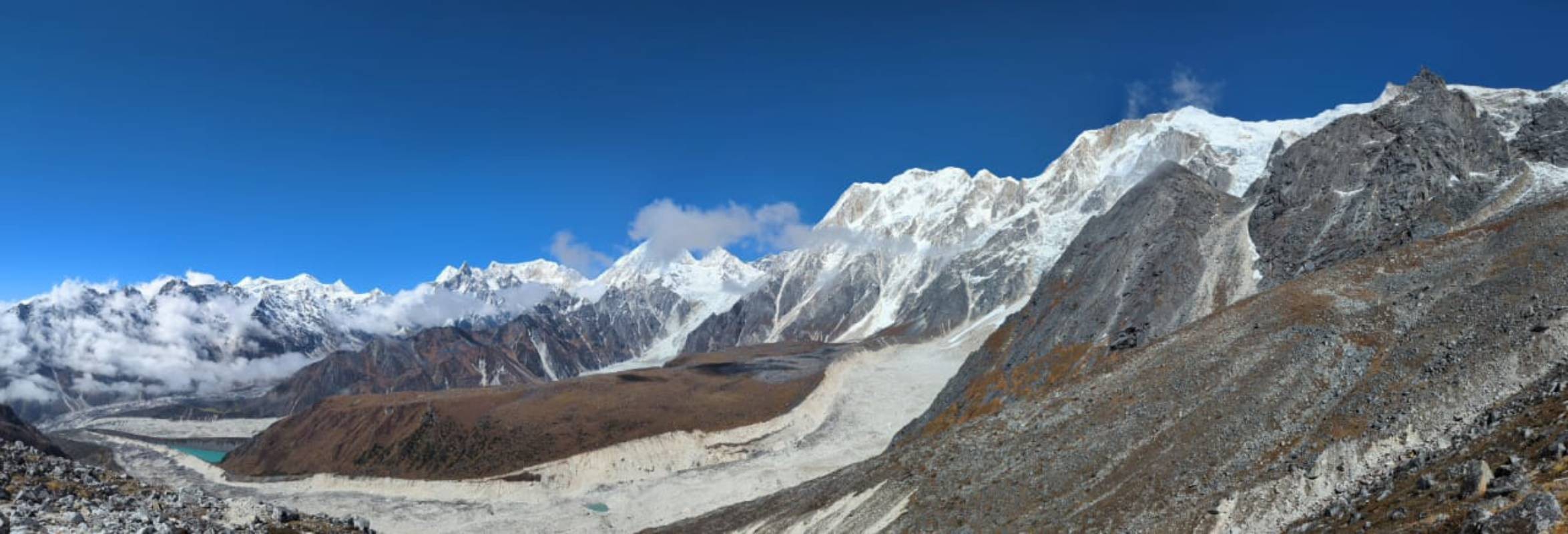 Peak Climbing In Nepal
Peak Climbing In Nepal
Best Trekking with Peak Climbing in Nepal For Beginners List
Nepal is the most popular Himalayan country for trekking Peak Climbing in Nepal provides a beautifully landscaped wide range of Himalayan views, Nepal has more than 13000 peaks above 6000 meters only 602 peaks are open for climbing routes by The Nepal Government of Nepal, It is possible to do trekking with peak climbing in Nepal, here are some popular Best Trekking with Peak Climbing in Nepal for Beginners List.
Best Trekking with Peak Climbing in Nepal for Beginners
1. Island Peak Climbing In Nepal 8189 meters, Everest Region Peak Climbing in Nepal
2. Mera Peak Climbing In Nepal 6476 meters, Khumbu/Everest Region Peak Climbing in Nepal
3. Lobuche Peak Climbing In Nepal 6119 meters, Khumbu / Everest Region Peak Climbing in Nepal
4. Lobuche West Peak Climbing In Nepal 6135 meters, Khumbu / Everest Region Peak Climbing in Nepal
5. Dhampus Peak Climbing In Nepal 6012 Meters, Dhaulagiri / Annapurna Region Peak Climbing
6. Naya Kanga Peak Climbing In Nepal/ Ganja La Chuli 5863 meters, Langtang Region
7. Tent Peak Climbing In Nepal 5663 meters, Annapurna Region Peak Climbing In Nepal
8. Larkya Peak Climbing In Nepal 6249 meters, Manaslu Region Peak climbing in Nepal
9. Chulu West Peak Climbing In Nepal 6419 meters, Annapurna Region Peak Climbing In Nepal
10, Saribung Peak Climbing In Nepal 6328 meters, Mustang Region Peak climbing in Nepal
11. Paldor Peak Climbing in Nepal 5903 meters, Langtang Region Peak Climbing in Nepal
12. Pisang Peak Climbing in Nepal 6091 meters, Annapurna Region Peak Climbing in Nepal
13. Thorong Peak Climbing in Nepal 6144 meters, Annapurna Region Peak Climbing in Nepal
14. Dhampus Peak Climbing in Nepal 6012 meters, Annapurna Region Peak Climbing in Nepal
15. Hiuchuli Peak Climbing in Nepal 6441 meters, Annapurna Region Peak Climbing in Nepal
16. Tharpu Chuli Peak Climbing in Nepal 5695 meters, Annapurna Region Peak Climbing
17. Mardi Himal Peak Climbing in Nepal 5553 meters, Annapurna Region Peak Climbing in Nepal
18. Ramdung Peak Climbing in Nepal 5930 meters, Khumbu and Rolwing Valley Peak Climbing
19. Yala Peak Climbing in Nepal 5520 meters, Langtang Region Peak Climbing
20. Pokalde Peak Climbing in Nepal 5806 meters, Everest Region peak climbing
21. Nirekha Peak climbing in Nepal 6159 meters, Khumbu Region Peak Climbing
22, Chulu East Peak Climbing in Nepal 6584 meters, Annapurna Region Peak Climbing
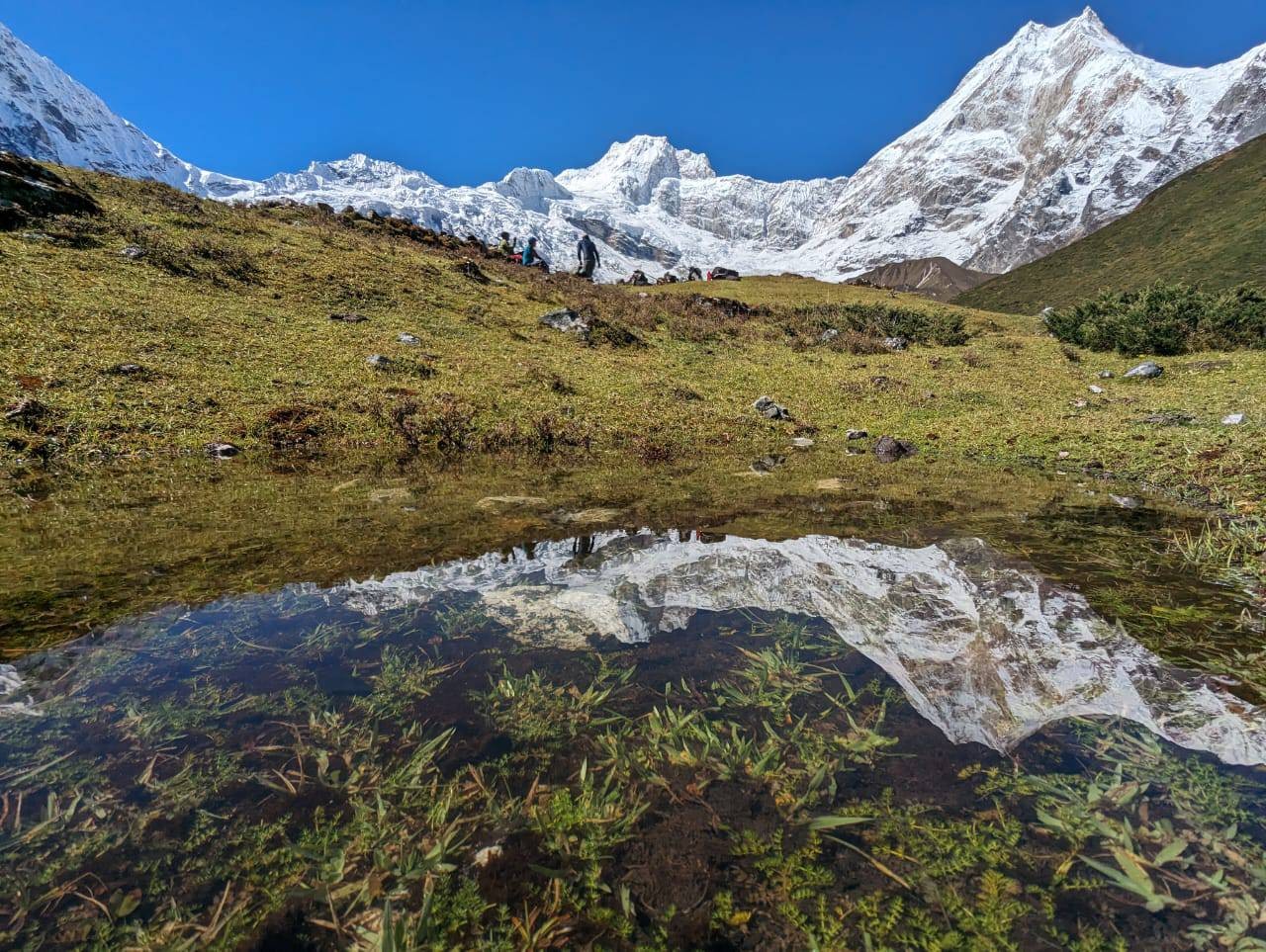 Trek Route and Peak Climbing
Trek Route and Peak Climbing
Top 5 Peaks Climbing in Nepal
1, Island Peak Climbing
2, Mera Peak Climbing
3, Lobuche Peak Climbing
4, Chulu West Peak Climbing
5, Yala Peak Climbing
Climbers find Island Peak, Mera Peak, Lobuche Peak, Yala Peak, and Chulu West Peak as the top 5 Peaks Climbing in Nepal. Now, let’s discuss these peaks climbing one by one in detail.
Island Peak Climbing
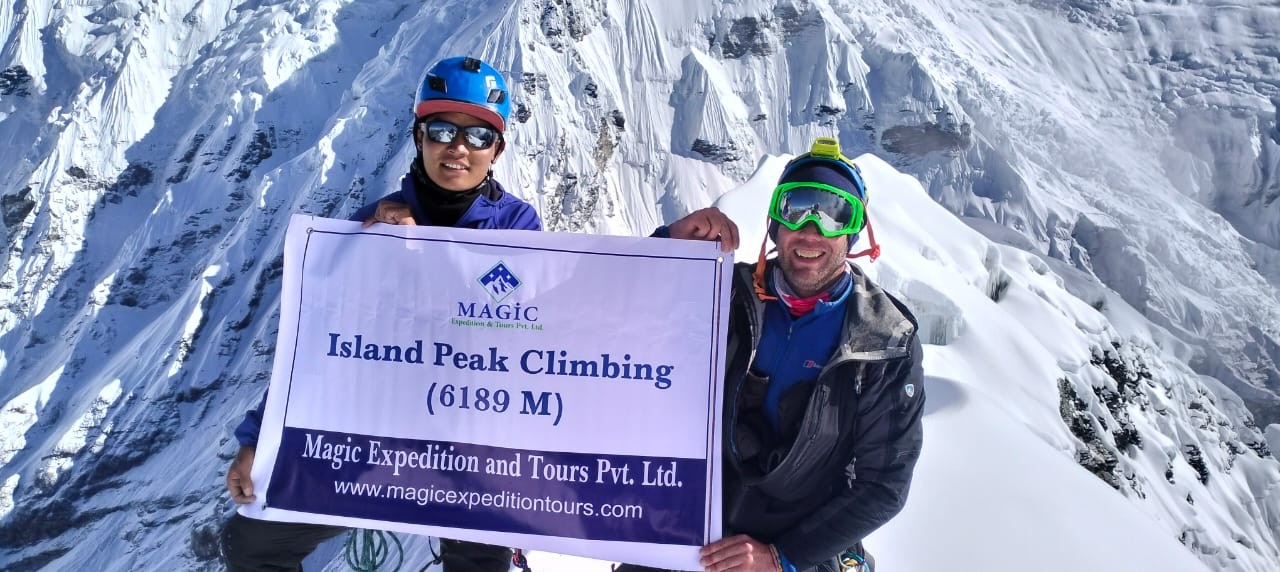
Island Peak, also known as Imja Tse, is a popular trekking peak in the Khumbu region of Nepal, standing at 6,189 meters (20,305 feet) above sea level. It offers a thrilling climbing experience and is often chosen as an introductory climb for aspiring mountaineers. The journey to Island Peak Climbing typically starts with a scenic flight to Lukla, followed by trekking through picturesque Sherpa villages and captivating landscapes like the Everest Base Camp trail.
As climbers advance, they reach the base camp of Island Peak, where they receive training on basic mountaineering techniques, including the use of ice axes, crampons, and ropes. The climb involves a mixture of trekking and roped ascent on ice and snow slopes, culminating in a challenging summit push.
Upon reaching the top, climbers are rewarded with breathtaking panoramic views of some of the world's highest peaks, including Lhotse, Nuptse, and Makalu. Descending back to base camp, trekkers often feel a profound sense of accomplishment and awe-inspiring memories of conquering Island Peak.
Island Peak Climbing Level of Difficulty
Island Peak, situated in the Himalayas of Nepal, is a thrilling and challenging climbing adventure. The difficulty level of Island Peak climbing is considered moderate to technical. Climbers must possess a solid level of physical fitness, as the ascent involves enduring long, strenuous days of trekking to reach the base camp. Prior high-altitude trekking experience is recommended, as the journey leads through diverse landscapes, including rugged trails, moraines, and glaciers.
The climb toward the summit requires basic mountaineering skills and familiarity with using crampons, ropes, and ice axes to navigate through steep and icy sections. Climbers will encounter crevasses and potentially challenging weather conditions, demanding a cautious approach and teamwork.
The altitude presents a significant challenge, as the peak is 6,189 meters (20,305 feet). Adequate acclimatization is crucial to minimize the risk of altitude-related illnesses. Climbers need to pace themselves, ascending gradually and allowing their bodies to adjust to thinner air.
Despite its difficulties, the reward for conquering Island Peak is unparalleled. Standing atop the summit offers awe-inspiring views of neighboring Himalayan giants, making it an unforgettable achievement for seasoned mountaineers seeking a taste of high-altitude adventure.
Mera Peak Climbing
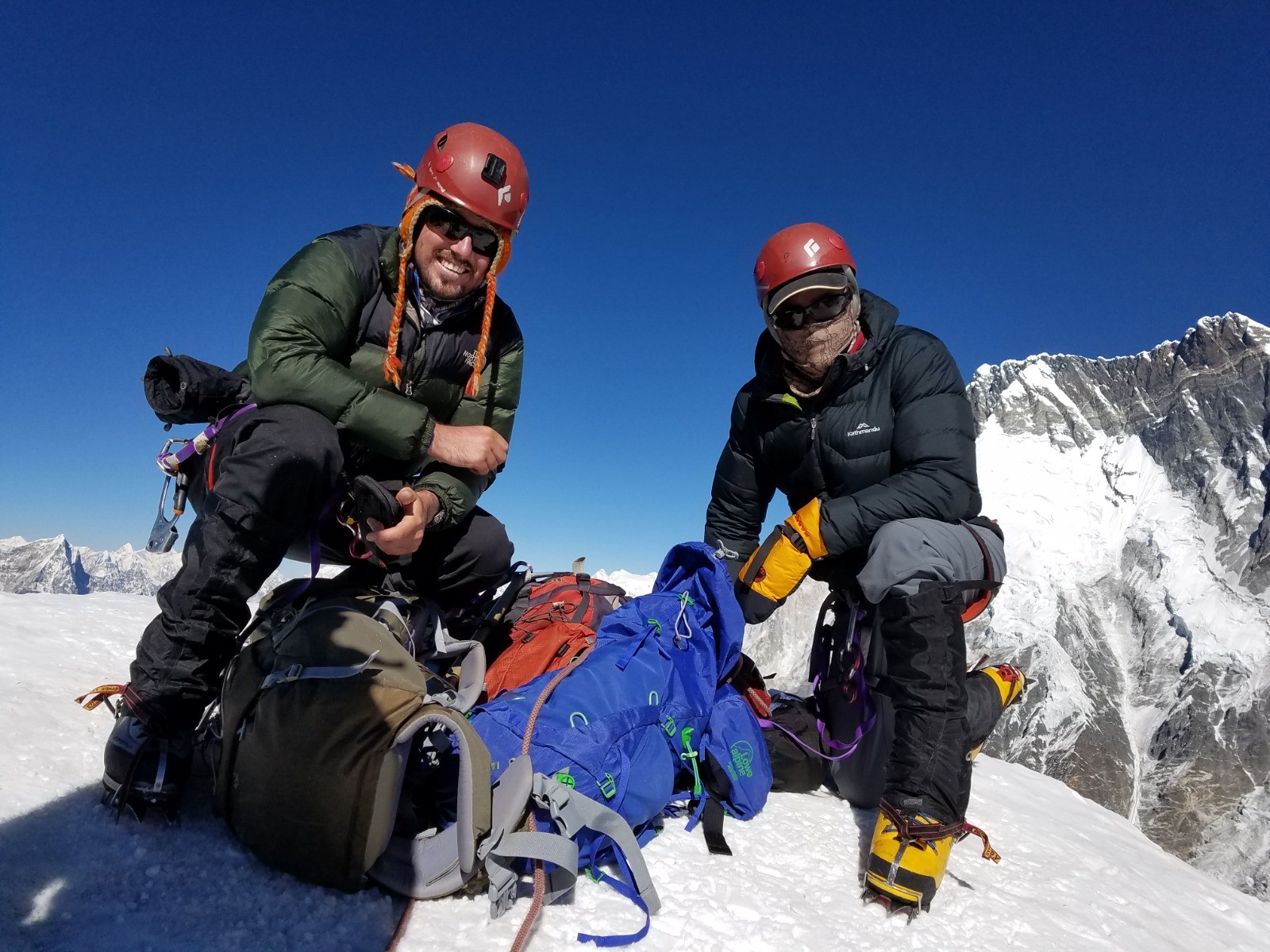
Mera Peak is a thrilling Himalayan climbing expedition that lures adventurers to the Khumbu region of Nepal. Standing at an impressive 6,476 meters (21,247 feet), it is classified as a trekking peak, making it accessible to experienced trekkers with basic mountaineering skills. The journey begins with a scenic flight from Kathmandu to Lukla, followed by a trek through picturesque villages, lush forests, and awe-inspiring valleys.
As climbers ascend higher, they encounter challenges like high altitudes and varying terrain. However, the risks are mitigated with the guidance of experienced Sherpa guides and proper acclimatization. The ascent typically includes establishing base camps and higher camps, each offering stunning panoramas of Everest, Lhotse, Cho Oyu, and Makalu.
The final summit push is the highlight of the expedition. The crisp mountain air and breathtaking views motivate climbers to conquer the summit. The reward is a sense of accomplishment and the sight of some of the world's highest peaks.
While physically demanding, the experience of Mera Peak climbing is equally rewarding. The region's unique culture, warm hospitality, and encounters with local Sherpa communities add a cultural dimension to the adventure.
Ultimately, Mera Peak climbing is an unforgettable journey, combining the beauty of the Himalayas with the exhilaration of conquering a challenging peak. Climbers leave with cherished memories and a profound appreciation for the wonders of the natural world and their abilities.
Mera Peak Climbing Level of Difficulty
Mera Peak, situated in the Himalayas of Nepal, is one of the most popular trekking peaks and a challenging mountaineering destination. Climbing Mera Peak Climbing demands a high level of physical fitness, technical skill, and a spirit of adventure. At an elevation of 6,476 meters (21,247 feet), it is categorized as a "Trekking Peak" by the Nepal Mountaineering Association, making it accessible to experienced trekkers with basic mountaineering skills.
The difficulty level of climbing Mera Peak stems from several factors. Firstly, the altitude poses a significant challenge, requiring climbers to acclimatize properly to prevent altitude-related illnesses. The ascent involves traversing glaciers, steep slopes, and snowfields, necessitating the use of technical equipment like crampons, ice axes, and ropes.
The expedition typically lasts around 15 days, including trekking to the base camp and high-altitude camps. The climb from the high camp to the summit often takes place during the night to maximize favorable weather conditions and avoid soft snow during the day.
While no prior mountaineering experience is essential, participants should possess a good understanding of basic mountaineering techniques, ice and snow skills, and the ability to navigate challenging terrain. The extreme weather conditions in the Himalayas can change rapidly, adding another layer of difficulty.
In summary, Mera Peak climbing demands a moderate to high level of mountaineering experience, physical fitness, mental resilience, and adaptability to adverse conditions. It is a thrilling and rewarding endeavor for those seeking an introduction to Himalayan mountaineering and stunning panoramic views from the summit. However, climbers should undertake proper training and preparation to tackle this exhilarating but challenging ascent.
Yala Peak Climbing
Yala Peak Climbing is a popular and relatively accessible mountain for climbing in the Langtang region of Nepal. Standing at an altitude of 5,732 meters (18,806 feet), it offers an exciting opportunity for both novice and experienced climbers to experience the thrill of mountaineering in the Himalayas.
The journey to Yala Peak typically begins in Kathmandu, where climbers take a scenic drive to Syabrubesi, a picturesque village at the trailhead. The trek to Yala Peak base camp takes around 3-4 days, passing through lush forests, charming villages, and breathtaking landscapes. The Langtang Valley trek, which precedes the climb, also provides an opportunity to immerse in the local Tamang culture and witness stunning views of the surrounding peaks.
Upon reaching the Yala Peak base camp, climbers undergo the necessary preparations and acclimatization to adjust to the higher altitude. The ascent to the summit usually involves crossing a glacier and involves the use of basic mountaineering equipment, such as crampons and ice axes. The climb is considered non-technical, making it accessible for climbers with limited experience, although a local guide is still recommended for safety and navigation.
Reaching the top of Yala Peak rewards climbers with awe-inspiring panoramic views of Langtang Lirung, Dorje Lakpa, Shishapangma, and other neighboring peaks. The experience of standing on the summit, surrounded by the majestic Himalayan range, is truly unforgettable and a significant achievement for many climbers.
While Yala Peak climbing is relatively less demanding than some of Nepal's other peaks, climbers should still possess a reasonable level of fitness and be mentally prepared for the challenges of high-altitude mountaineering. It is crucial to follow ethical climbing practices, respect the local culture, and preserve the pristine environment of the Langtang region. Overall, Yala Peak offers an extraordinary adventure that combines trekking, cultural exploration, and a taste of Himalayan mountaineering, making it a cherished experience for all who undertake the journey.
Yala Peak Climbing Level of Difficulty
Yala Peak climbing is considered a moderately challenging climbing, suitable for those with prior trekking and basic mountaineering experience. Situated in the Langtang region of Nepal, Yala Peak stands at an elevation of 5,732 meters (18,806 feet), making it an appealing option for aspiring climbers seeking a taste of Himalayan peak climbing without tackling the extreme heights of 8,000-meter peaks.
The ascent involves a combination of trekking and technical climbing, with sections of icy slopes and rocky terrain. Climbers must be proficient in using ice axes, crampons, and rope techniques to negotiate these obstacles safely. Prior experience with high-altitude trekking and exposure to cold conditions is highly recommended, as the ascent involves significant altitude gain and challenging weather conditions.
The typical Yala Peak climbing itinerary includes acclimatization days to help climbers adjust to the altitude, reducing the risk of altitude-related illnesses. The ascent typically takes around 9-10 days, depending on the chosen route and the climber's fitness level.
It's essential for climbers attempting Yala Peak to be in good physical shape, possess strong mental determination, and have some technical climbing skills. While not as technically demanding as some of the more renowned peaks in the Himalayas, Yala Peak still requires proper planning, guidance from experienced guides, and a team equipped with the right gear.
Overall, Yala Peak climbing offers a rewarding and unforgettable experience for adventurers seeking an introductory taste of Himalayan peak climbing while being surrounded by stunning landscapes and cultural encounters in the Langtang region.
Chulu West Peak Climbing
Chulu West Peak is an exciting and challenging trekking peak situated in the Annapurna region of Nepal. Standing at an impressive altitude of 6,419 meters (21,055 feet), it offers breathtaking panoramic views of some of the world's highest peaks, including Annapurna II, III, and IV, Manaslu, and Gangapurna.
The journey to conquer Chulu West Peak Climbing usually begins in the vibrant city of Kathmandu, where trekkers can savor the rich Nepalese culture and prepare for the adventure ahead. The trek commences from the picturesque village of Besisahar, and the route follows the famous Annapurna Circuit trail for several days, passing through lush rhododendron forests, terraced farmlands, and charming traditional villages inhabited by the local Gurung and Thakali communities.
As trekkers venture deeper into the region, the landscape transforms, revealing arid and rugged terrains. They cross challenging high passes, such as the Thorong La Pass at 5,416 meters (17,769 feet), which demands acclimatization and good physical condition. After reaching the village of Manang, the trail deviates towards the Chulu West Base Camp.
At the Base Camp, climbers rest and acclimatize further before embarking on the technical ascent. The climb involves traversing ice and snow slopes and requires previous mountaineering experience and adequate gear. Expert local guides and experienced Sherpas usually accompany trekkers, ensuring safety and providing valuable guidance.
The summit day is the most demanding yet rewarding part of the expedition. The climbers start early in the morning to avoid potential hazards caused by changing weather conditions. As they ascend, the glow of the rising sun illuminates the surrounding peaks, creating a magical atmosphere. Reaching the summit of Chulu West is an exhilarating achievement and offers a sense of fulfillment that few experiences can match.
The descent follows a similar route, and trekkers can choose to extend their adventure by continuing the Annapurna Circuit or descending via a different trail. Throughout the journey, trekkers are immersed in the unparalleled beauty of the Annapurna region and the warmth of the local hospitality, making the Chulu West Peak climbing expedition an unforgettable and life-enriching experience.
Chulu West Peak Climbing Level of Difficulty
Chulu West Peak, situated in the beautiful Annapurna region of Nepal, is a challenging and rewarding mountaineering experience. It stands at an elevation of 6,419 meters (21,059 feet), making it a desirable destination for experienced climbers seeking to conquer a Himalayan summit.
The climb to Chulu West demands a high level of physical fitness, technical skills, and acclimatization. Trekkers will traverse rugged terrain, ascending steep slopes, and navigating glacier crossings. The ascent often involves ice and rock climbing, requiring proficiency in using crampons, ice axes, and ropes.
Climbers must be mentally prepared for the harsh conditions, unpredictable weather, and potential altitude-related challenges. The expedition involves camping at high altitudes, enduring freezing temperatures, and coping with reduced oxygen levels.
A typical Chulu West Peak climbing itinerary involves several days of trekking to reach the base camp, allowing time for acclimatization. Climbers will require experienced guides and Sherpas to ensure safety and successful navigation of the route.
In conclusion, Chulu West Peak climbing is an arduous adventure that demands technical expertise, physical endurance, and mental determination. Conquering this majestic peak promises awe-inspiring views and a sense of accomplishment for those willing to embrace the challenge.
Lobuche Peak Climbing
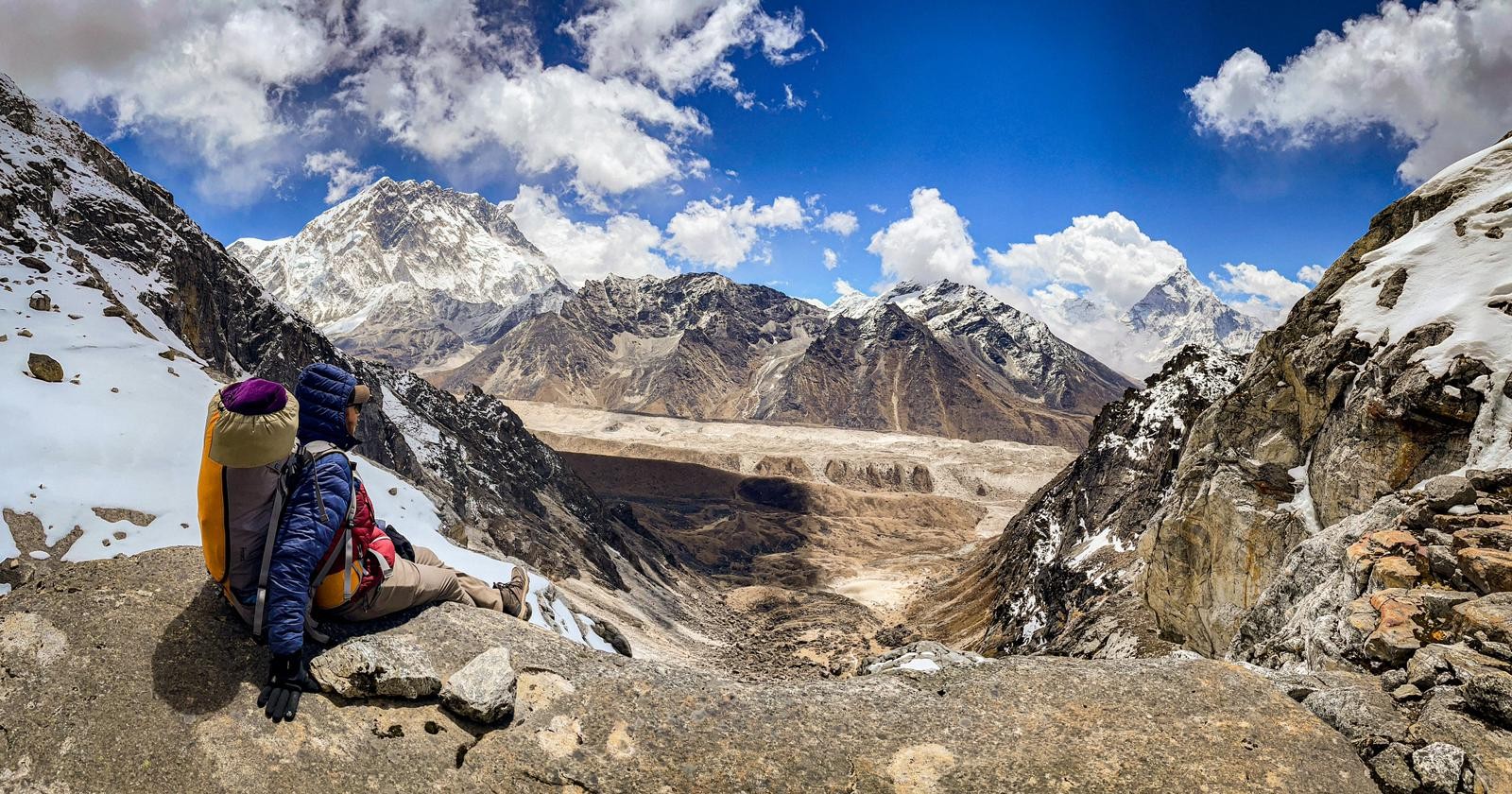
Lobuche Peaks climbing is an exhilarating adventure in the Himalayas. Standing at 6,119 meters, Lobuche East Peak and Lobuche West Peak (6,145m) offer a challenging yet rewarding experience for mountaineers. Both Lobuche East and West peak climbing are thrilling.
The climbing journey weaves through stunning landscapes, icy glaciers, and Sherpa villages, showcasing Nepal's natural beauty. Aspiring climbers tackle technical ascents and ice slopes, requiring basic mountaineering skills. The summits reveal breathtaking panoramic views of Everest, Lhotse, and Ama Dablam. With proper acclimatization and guided support, Lobuche Peaks climbing is an unforgettable expedition for those seeking both a physical and spiritual connection with the towering peaks of the Khumbu region. Lobuche Peaks ( East and West) both are very popular among adventure passionate for climbing.
Lobuche East Peak Climbing
Ascend to 6,119 meters, the apex of Lobuche East Peak through snowy trails and ice walls, highlighting stunning Himalayan vistas. With skilled guides, tackle technical challenges and experience high-altitude mountaineering. Traverse glaciers, conquer steep slopes, and relish breathtaking panoramas from the summit. This expedition combines trekking and climbing, providing an unforgettable journey for adventurous souls seeking an authentic Himalayan experience.
Lobuche West Peak Climbing
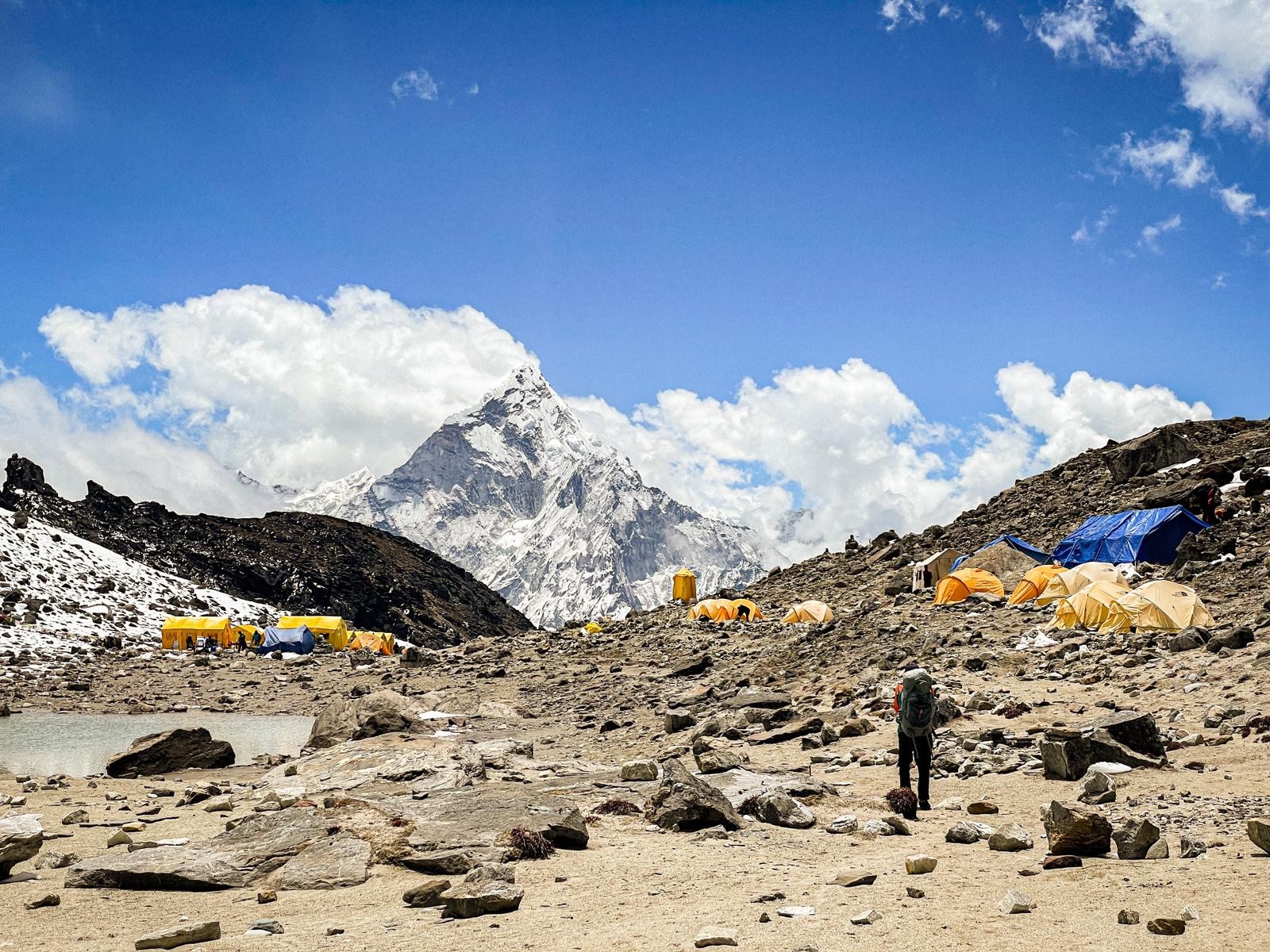
Lobuche West Peak (6,145m) beckons adventure seekers to the Khumbu region of Nepal. A thrilling trekking and climbing endeavor, it offers a challenging ascent with stunning alpine vistas. The journey starts in Lukla, leading through lush valleys, picturesque villages, and ancient monasteries, culminating at the Lobuche Base Camp. From there, climbers navigate rocky terrain, crevasses, and ice walls, requiring technical skills. The climb features a high camp and a final push to the summit, rewarding mountaineers with panoramic views of Everest, Lhotse, Nuptse, and other Himalayan giants. The experience demands physical fitness, acclimatization, and mountain proficiency. Lobuche West Peak presents a remarkable fusion of cultural immersion and mountain conquest, making it an unforgettable expedition for those seeking the thrill of both trekking and climbing in the majestic Himalayas.
Peak climbing in Nepal for the beginners
Nepal offers a fantastic opportunity for beginners to experience the thrill of peak climbing amidst breathtaking Himalayan vistas. Two popular peaks suitable for novices are Island Peak (Imja Tse) and Mera Peak. Island Peak, standing at 6,189 meters, is located in the Khumbu region and provides a balanced mix of trekking and basic mountaineering. It involves ice and rock sections, offering a great introduction to climbing techniques. Very high-level technicality is not required for Island Peak Climbing in Nepal.
Mera Peak, at 6,476 meters, is found in the Solu Khumbu region and involves a more gradual ascent, making it ideal for those new to climbing. The climb offers stunning views of Everest, Makalu, Cho Oyu, and other giants. Both peaks generally require some level of physical fitness and acclimatization, and climbing guides are recommended to ensure safety and proper guidance.
These peaks provide an incredible chance for beginners to step into the world of mountaineering while soaking in Nepal's rich culture and striking landscapes. It's essential to undertake thorough preparation, including physical conditioning and familiarizing oneself with basic climbing techniques, to make the most of this adventurous journey.
Venture at the right time of the year, equip with reliable equipment and technicality, choose a professional team, and make your peak climbing beautiful and memorable.
Peak Climbing in Nepal Best Time of the Year
The best time for peak climbing in Nepal is during the pre-monsoon (spring) and post-monsoon (autumn) seasons, spanning from March to May and September to November respectively. These periods offer optimal weather conditions and stunning landscapes, making them ideal for peak climbing adventures.
During the spring months of March to May, the weather in Nepal is characterized by mild temperatures, clear skies, and blossoming flora. This season provides climbers with excellent visibility of the majestic Himalayan peaks, enhancing the overall experience. The post-monsoon months of September to November offer similar advantages, with stable weather, minimal precipitation, and comfortable temperatures.
Both of these seasons fall between the monsoon and winter, avoiding extreme weather conditions. The monsoon season, which occurs from June to August, brings heavy rainfall and an increased risk of landslides and avalanches, making it unsuitable for peak climbing. Similarly, winter (December to February) brings harsh cold temperatures and heavy snowfall, making climbing hazardous and challenging.
The spring and autumn seasons not only offer favorable weather but also allow climbers to witness Nepal's unique cultural festivals and traditions, adding a cultural dimension to the journey. The trails are well-defined, and the teahouses along the routes are open, providing comfortable accommodations and interactions with fellow trekkers.
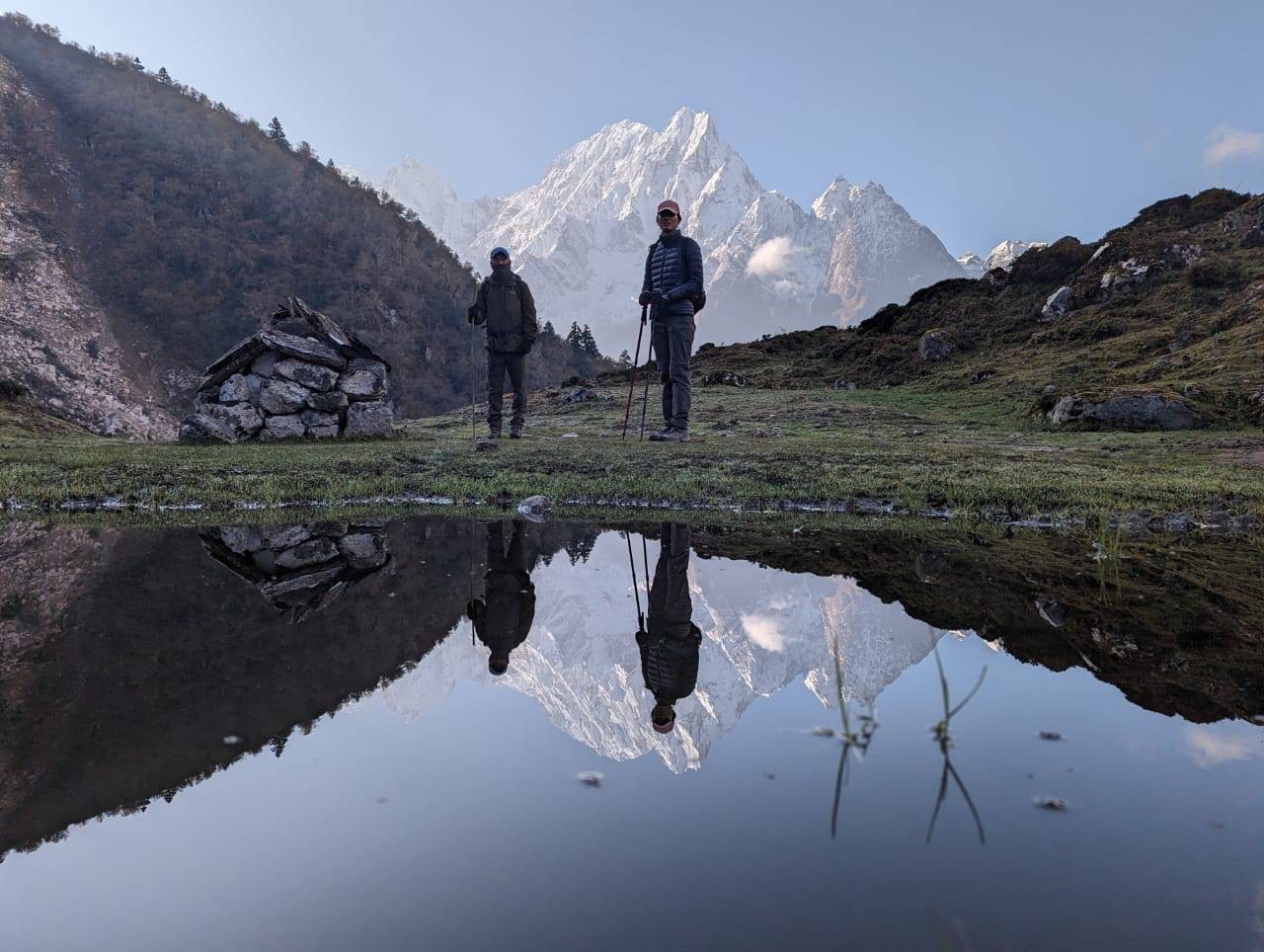 Trekking and Peak Climbing in Nepal
Trekking and Peak Climbing in Nepal
In conclusion, the pre-monsoon (spring) and post-monsoon (autumn) seasons are the best times for peak climbing in Nepal due to their pleasant weather, breathtaking mountain views, and overall safety. These seasons ensure an unforgettable adventure amidst the world's highest peaks, making them the most sought-after period for both seasoned climbers and novices seeking an extraordinary experience.
Top of Form
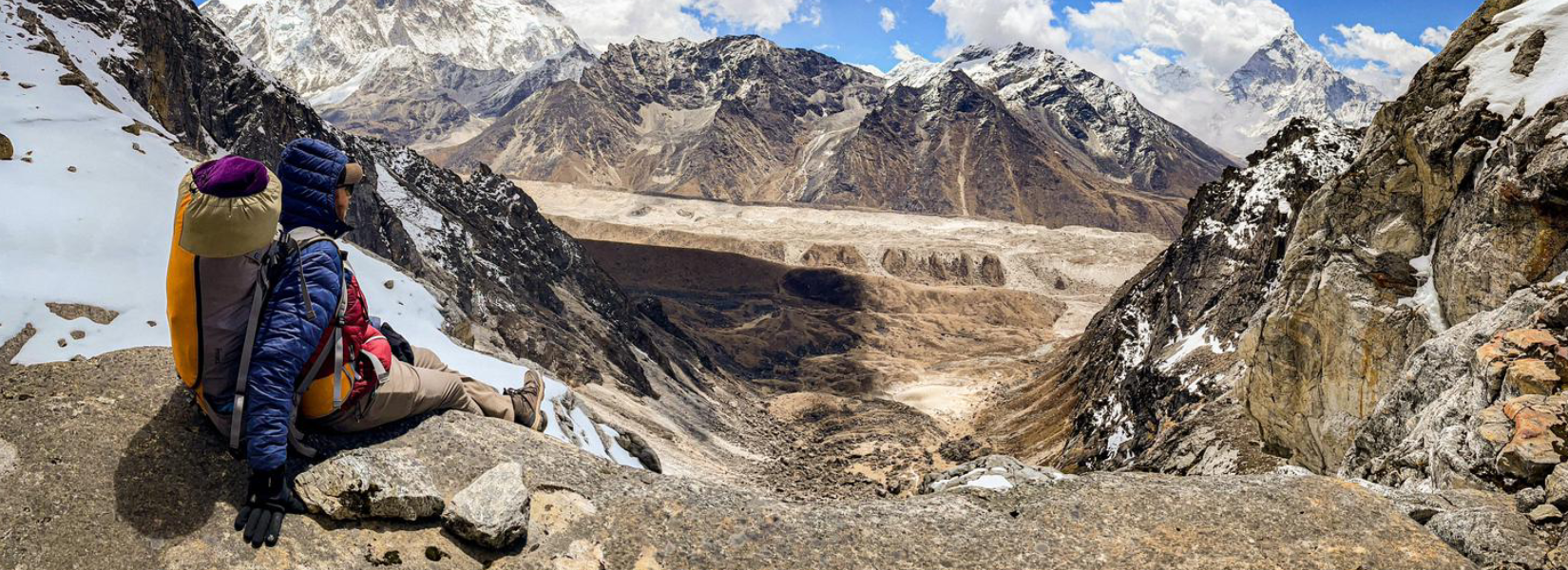
 Peak Climbing In Nepal
Peak Climbing In Nepal Trek Route and Peak Climbing
Trek Route and Peak Climbing



 Trekking and Peak Climbing in Nepal
Trekking and Peak Climbing in Nepal